Oceania
The acclaimed ‘Oceania’ exhibition at the Royal Academy of Arts brings to fruition the Museum of Archaeology and Anthropology’s most ambitious collaboration to date.
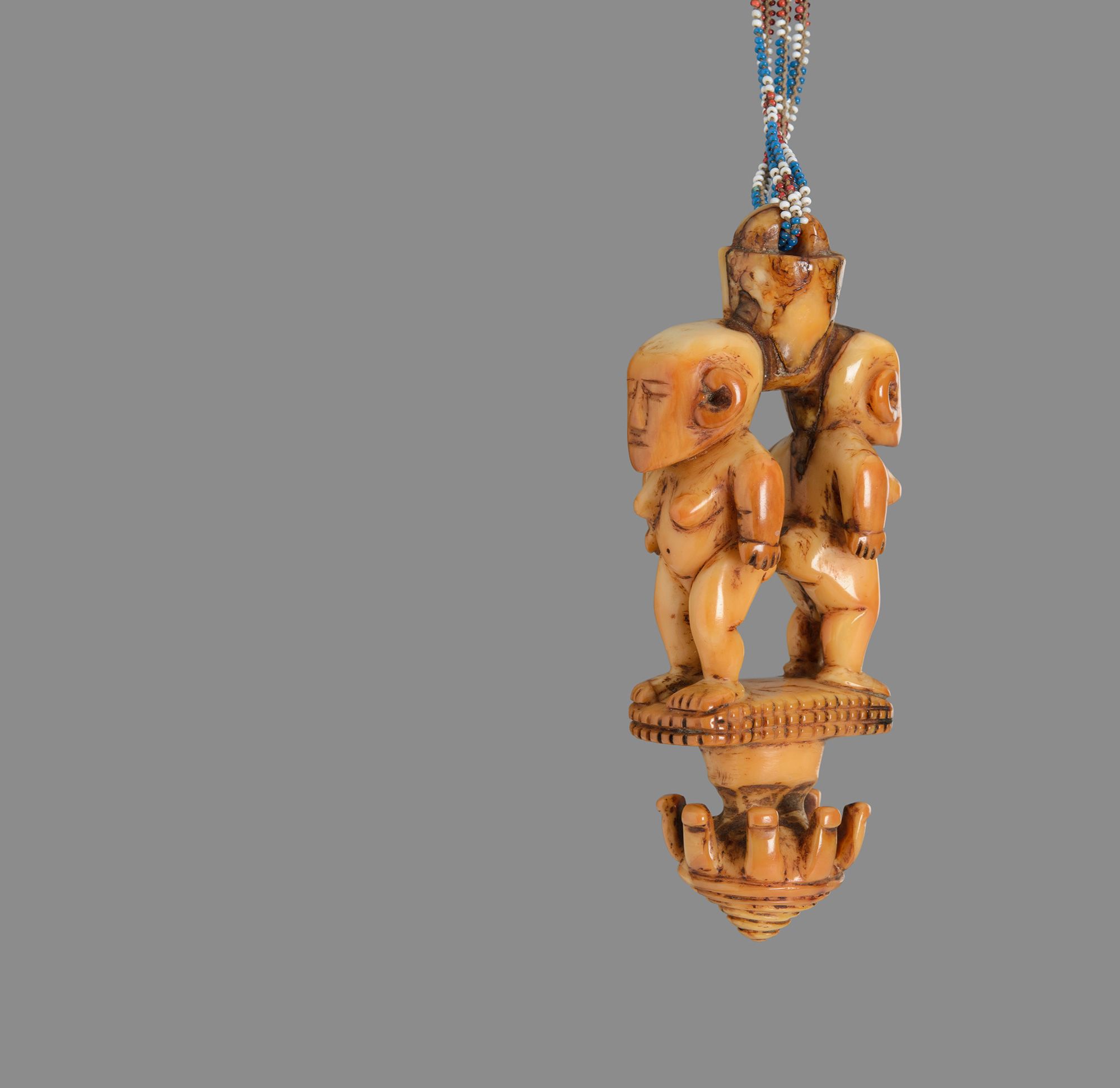
‘Oceania’ is the first exhibition in any UK art institution to represent the arts and histories of the region and the first major show dedicated to the Pacific in any northern hemisphere museum since 1979.
Oceania is not just a huge region – a third of the world’s surface, home to hundreds of distinct cultures across many islands and archipelagoes, from New Guinea in the southwest to Hawaii in the north, Rapanui in the southeast and New Zealand in the south.
Oceania is also an idea and an imagination.
The region is the only part of the world humans settled by travelling over water. It is a part of the world formed out of voyages, maritime connections, migration, exchange and encounter.
The exhibition is linked with the 250th anniversary of the departure of Captain Cook on his first voyage to the Pacific, which coincides with the 250th anniversary of the Royal Academy.
The project’s development over the last five years has been supported by a European Research Council Advanced Grant, ‘Pacific Presences: Oceanic art and European museums’, led by Professor Nicholas Thomas, Director of the Museum of Archaeology and Anthrology, and co-curator, with Peter Brunt of Victoria University, Wellington.
The ERC project has enabled a team of postdoctoral researchers and associates to conduct wide-ranging investigations of the vast collections of art and artefacts from Oceania found in ethnography museums across Europe.
Based in close collaboration with experts, artists and community members from across the Pacific, many of whom joined the research group for study visits to museums in Germany, the Netherlands, France, Italy, Spain, Estonia, Ireland and elsewhere, the project explored Indigenous art traditions, the histories of collections, and the values artefacts hold for Islanders in the present.
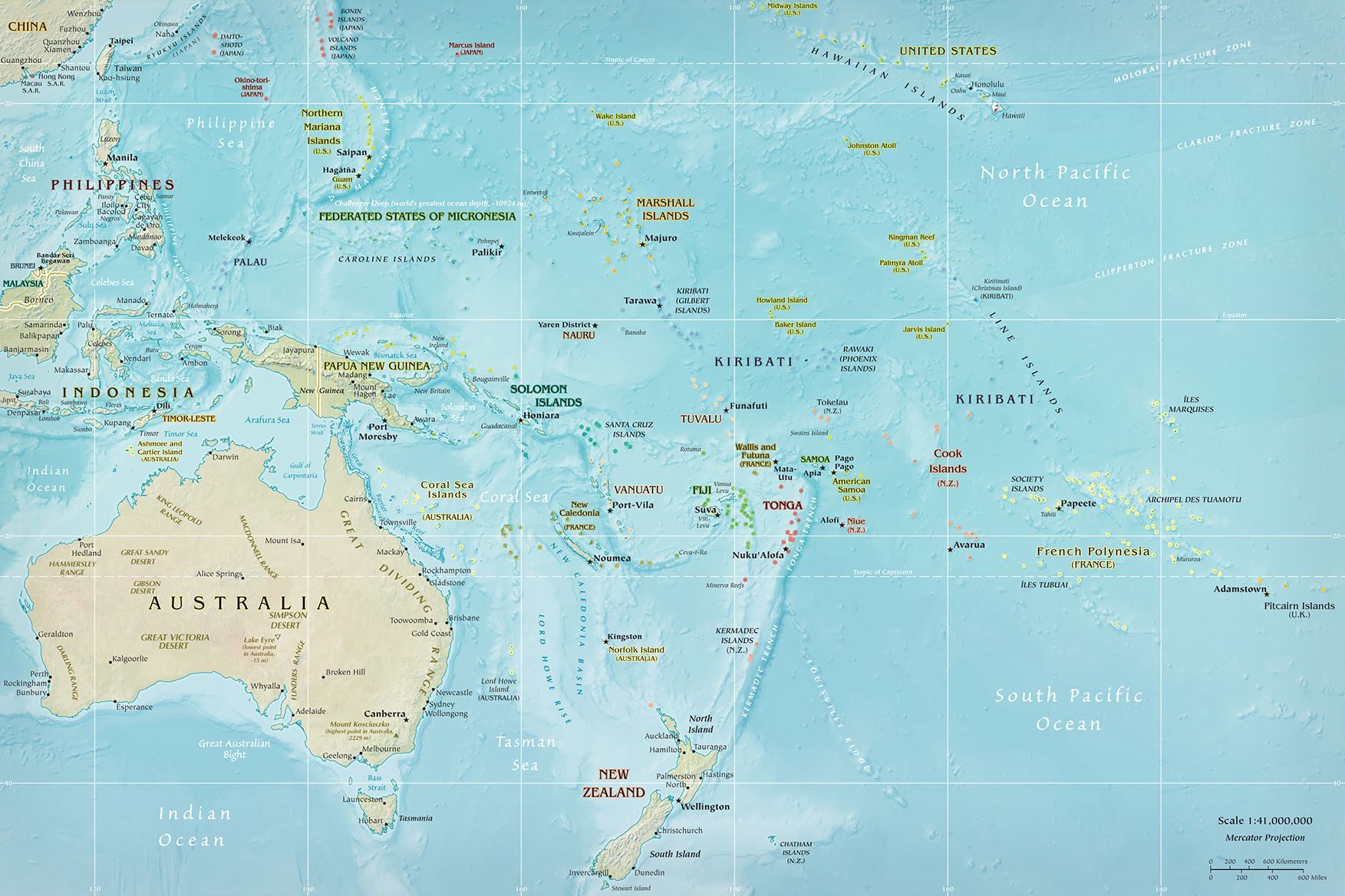
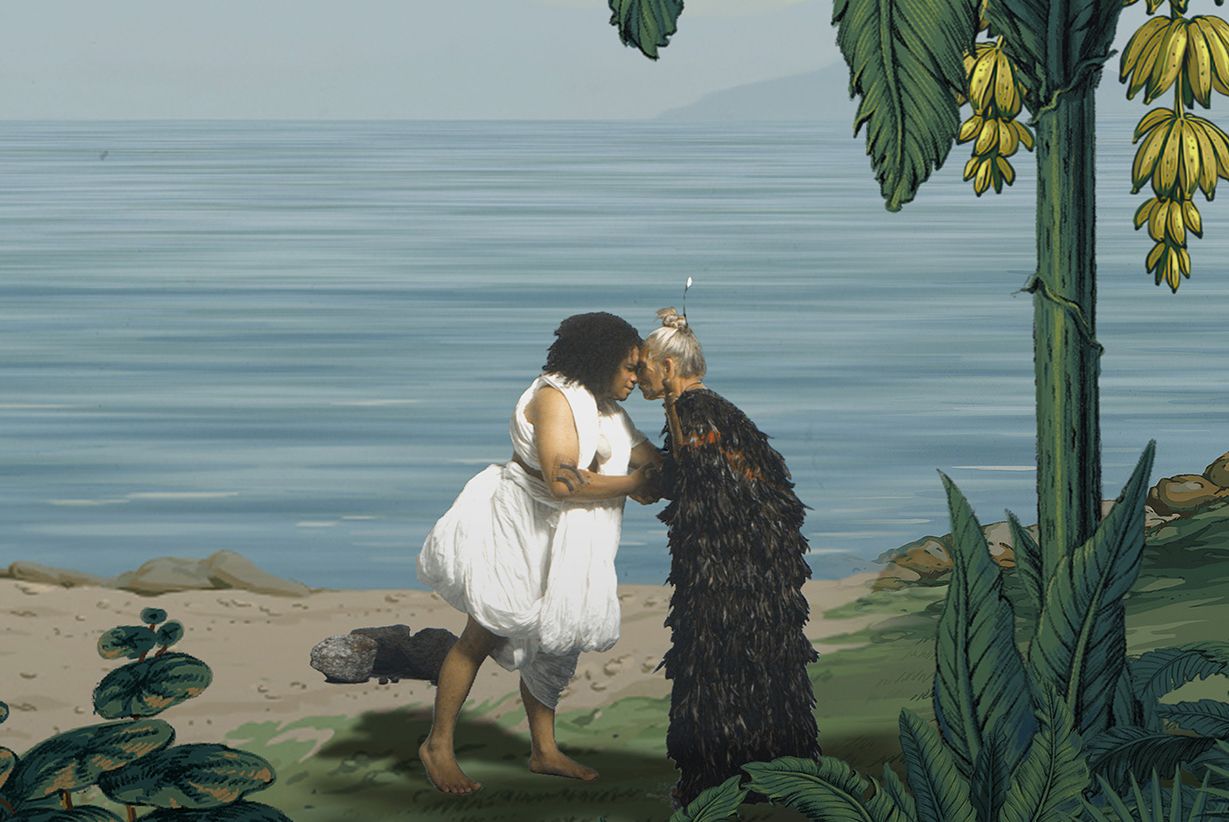
While previous exhibitions have presented the art styles of particular regions and cultures, ‘Oceania’ adopted a thematic approach, foregrounding the history of voyaging that gives the cultures of the islands their distinctness, ‘making place’, referring to the settlement of islands, their transformation into inhabited realms of culture, identity and ancestry, and encounter.
For millennia and centuries, Islanders encountered each other. Over the past 250 or so years, they have also encountered Europeans. Their horizons expanded, they adopted new art forms and beliefs, they suffered a confrontation with colonialism.
The exhibition is concerned not only with great historic art traditions but with issues such as climate change, which confront Islanders today.
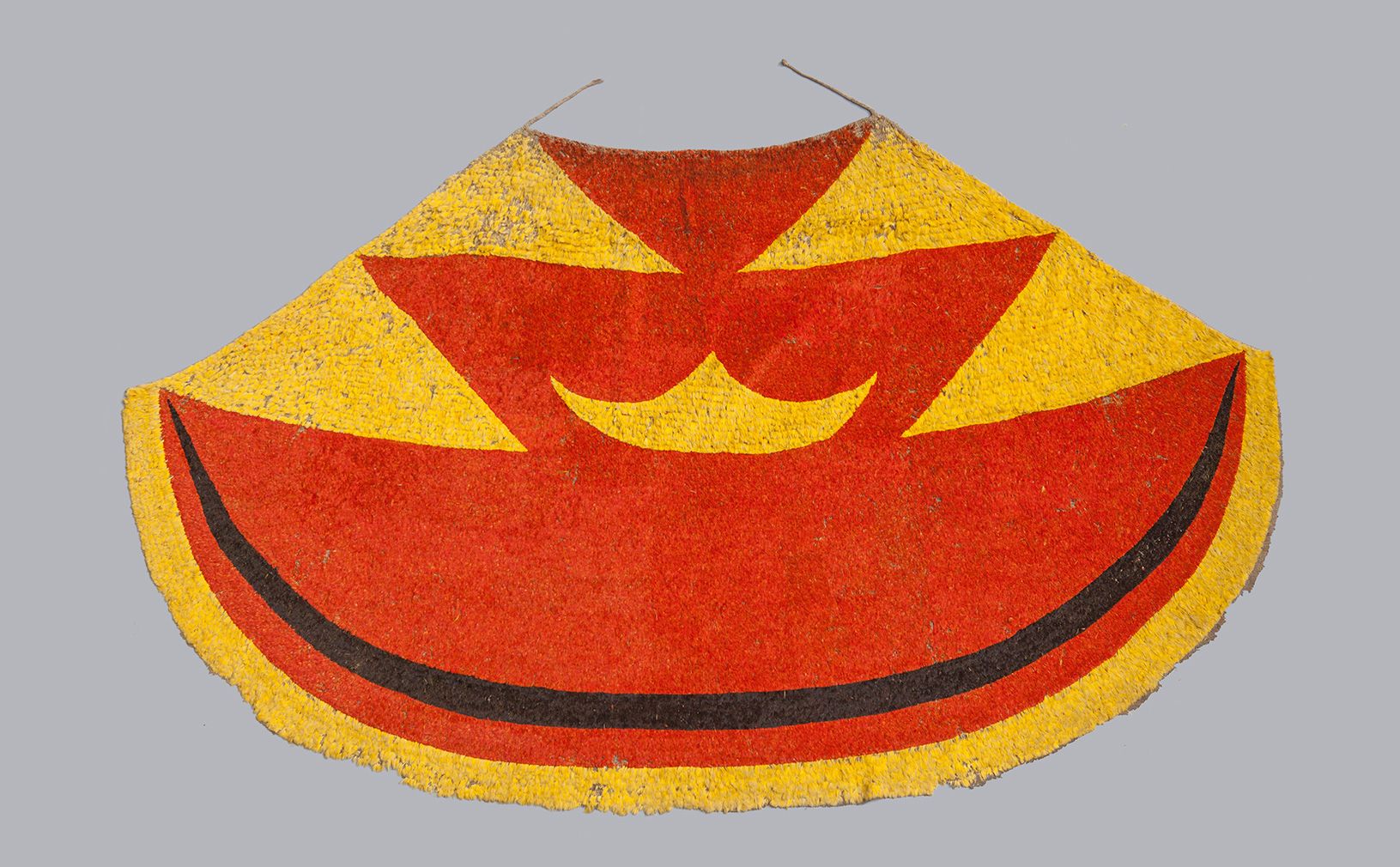
Ahu ula (feather cloak) belonging to Liholoho, Kamehameha II., Early 19th century Feathers, fibre, painted barkcloth (on reverse). 207cm Museum of Archaeology and Anthropology, University of Cambridge
Ahu ula (feather cloak) belonging to Liholoho, Kamehameha II., Early 19th century Feathers, fibre, painted barkcloth (on reverse). 207cm Museum of Archaeology and Anthropology, University of Cambridge
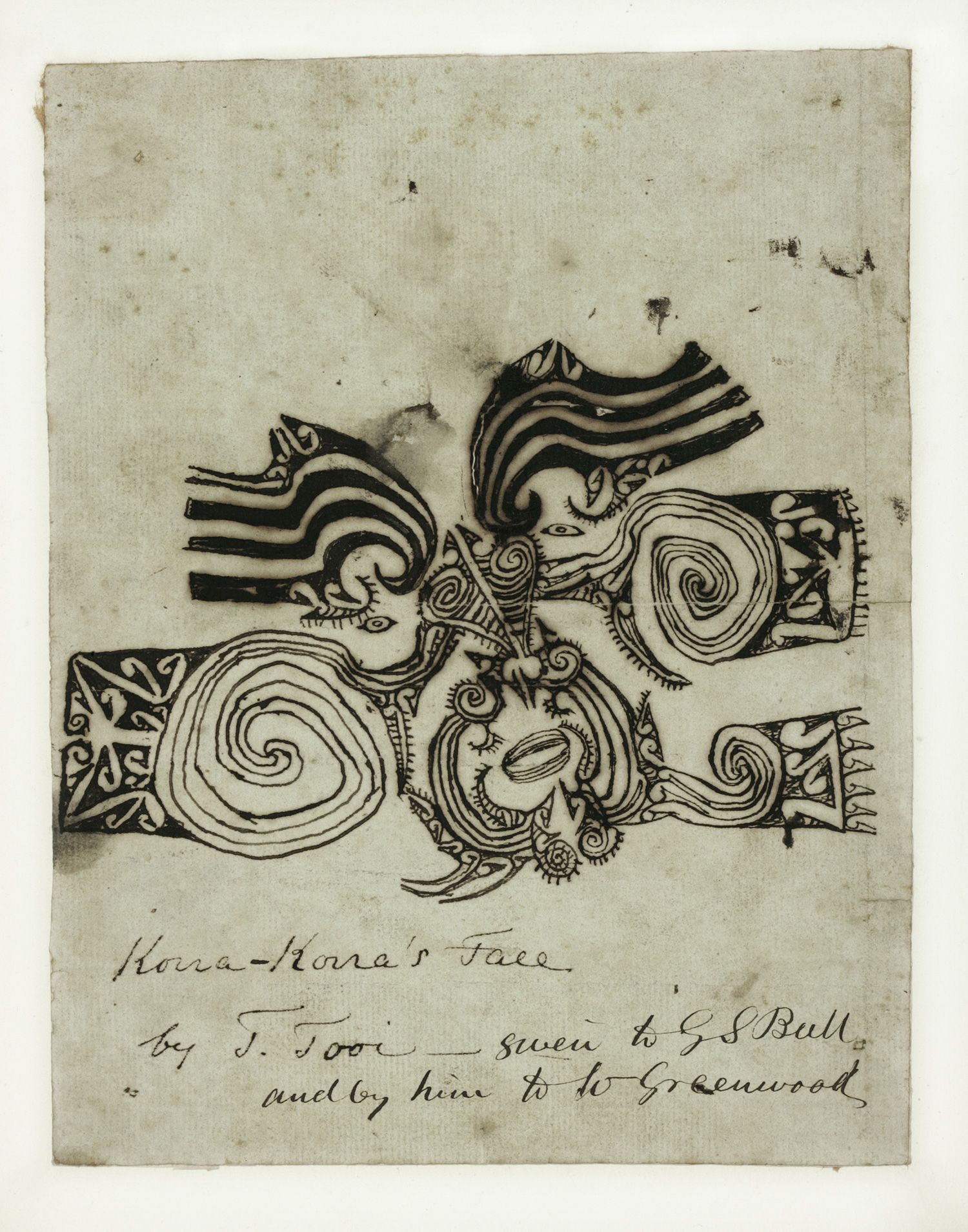
Tooi [Tuai], Drawing of Korokoro's moko, 1818. Paper, 30 x 50 cm. Sir George Grey Special Collections, Auckland Libraries, GNZMMS-147
Tooi [Tuai], Drawing of Korokoro's moko, 1818. Paper, 30 x 50 cm. Sir George Grey Special Collections, Auckland Libraries, GNZMMS-147
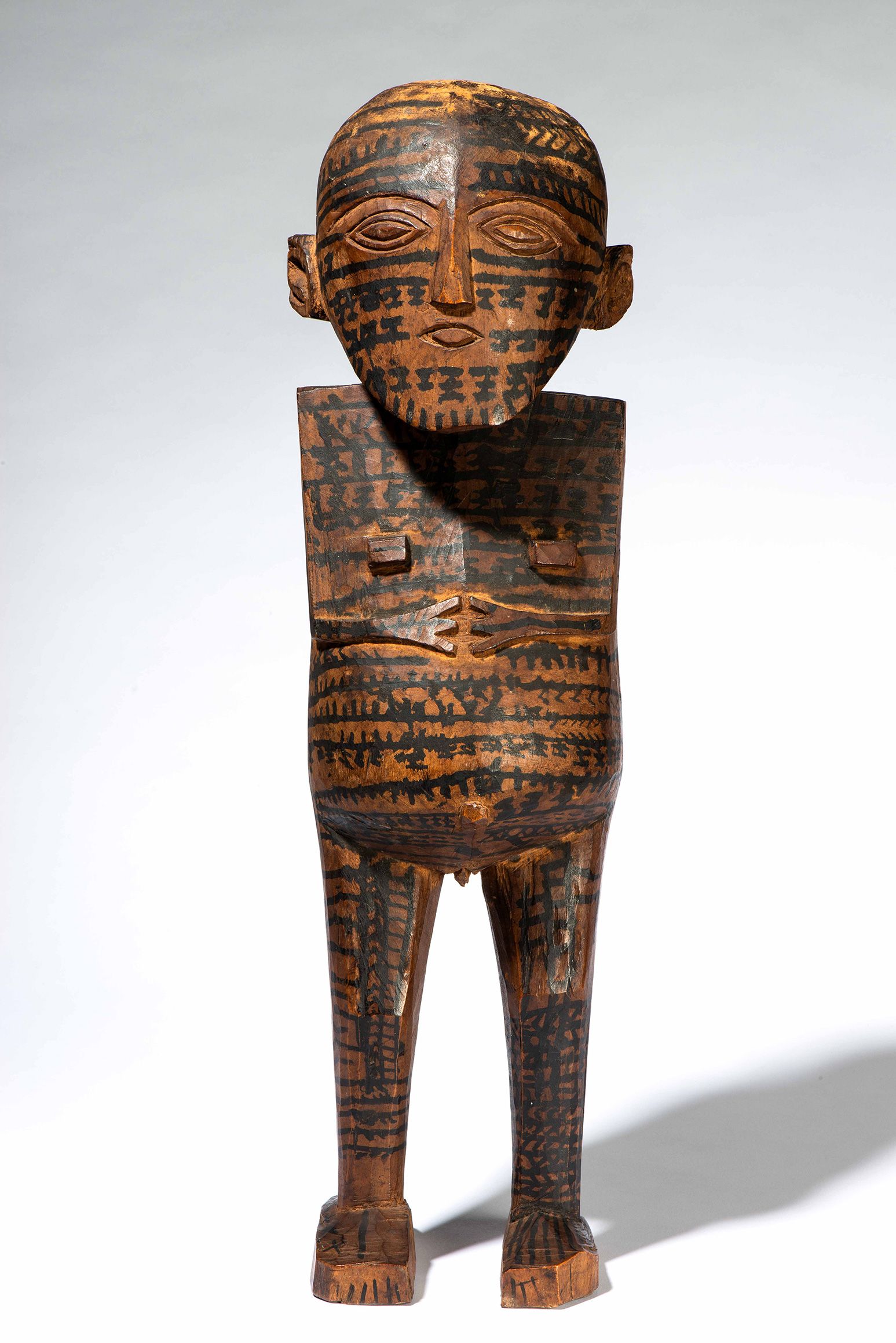
Female tattooed figure, eighteenth or early nineteenth century, Aitutaki, Cook Islands, Wood, pigment, height 58cm. © Five Continents Museum, Munich; photo: Marianne Franke
Female tattooed figure, eighteenth or early nineteenth century, Aitutaki, Cook Islands, Wood, pigment, height 58cm. © Five Continents Museum, Munich; photo: Marianne Franke
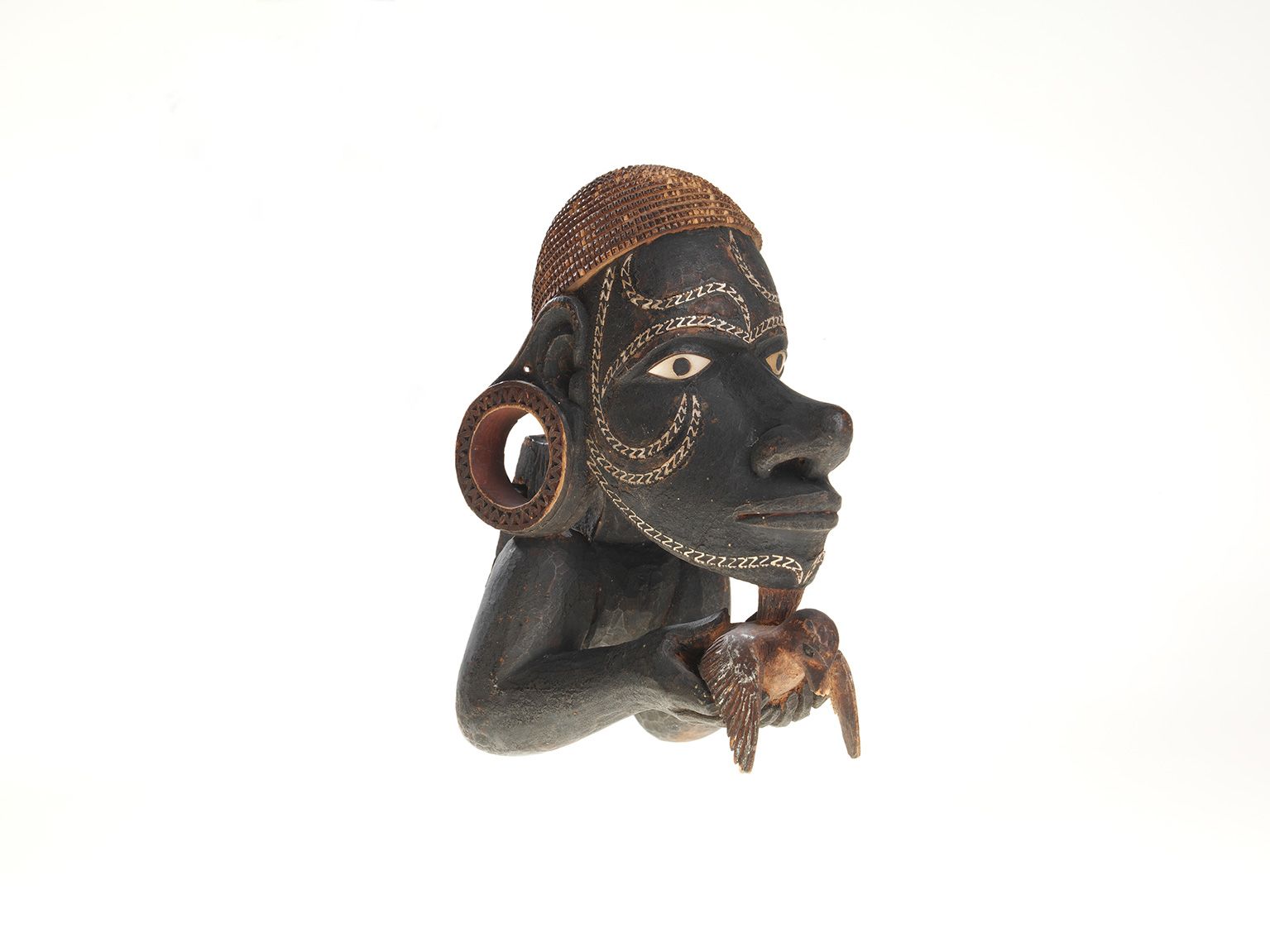
Canoe prow figure nguzunguzu; wood, pigments, resin, shell; 16,5 x 9 x 15,5cm; Marovo Lagoon, New Georgia Archipelago, Solomon Islands; collection Eugen Paravicini 1929; © Vb 7525; Museum der Kulturen Basel; photo: Derek Li Wan Po; 2013; all rights reserved
Canoe prow figure nguzunguzu; wood, pigments, resin, shell; 16,5 x 9 x 15,5cm; Marovo Lagoon, New Georgia Archipelago, Solomon Islands; collection Eugen Paravicini 1929; © Vb 7525; Museum der Kulturen Basel; photo: Derek Li Wan Po; 2013; all rights reserved
The exhibition uses a magnificent range of art works derived from some 30 museum collections across Europe and some contemporary works to illuminate these themes.
The Museum of Archaeology and Anthropology is the largest lender to the exhibition and was also closely involved in the selection of work, in associated research, and in building partnerships with relevant communities and artists who have supported the project’s development.
Representatives from Indigenous groups and Pacific Islands nations formed a procession from Green Park to the Royal Academy on the morning of Monday 24 September to bless the ancestral artefacts and the exhibition ahead of the opening ceremony, attended by Meghan, Duchess of Sussex on Tuesday 25 September.
The Duchess met with contemporary artists represented in the exhibition and community members, ahead of her visit to Australia, New Zealand, Fiji and Tonga in mid-October.
The exhibition, which has been celebrated in reviews across the UK media and internationally, is on in London until 10 December. It travels to the Musée du quai Branly-Jacques Chirac for a second and final showing from 12 March to 21 July 2019.
Among its important legacies are planned loans of early artefacts, including objects collected during Captain James Cook’s first voyage, to museums in the regions of origin in the Pacific, from next year onwards.

